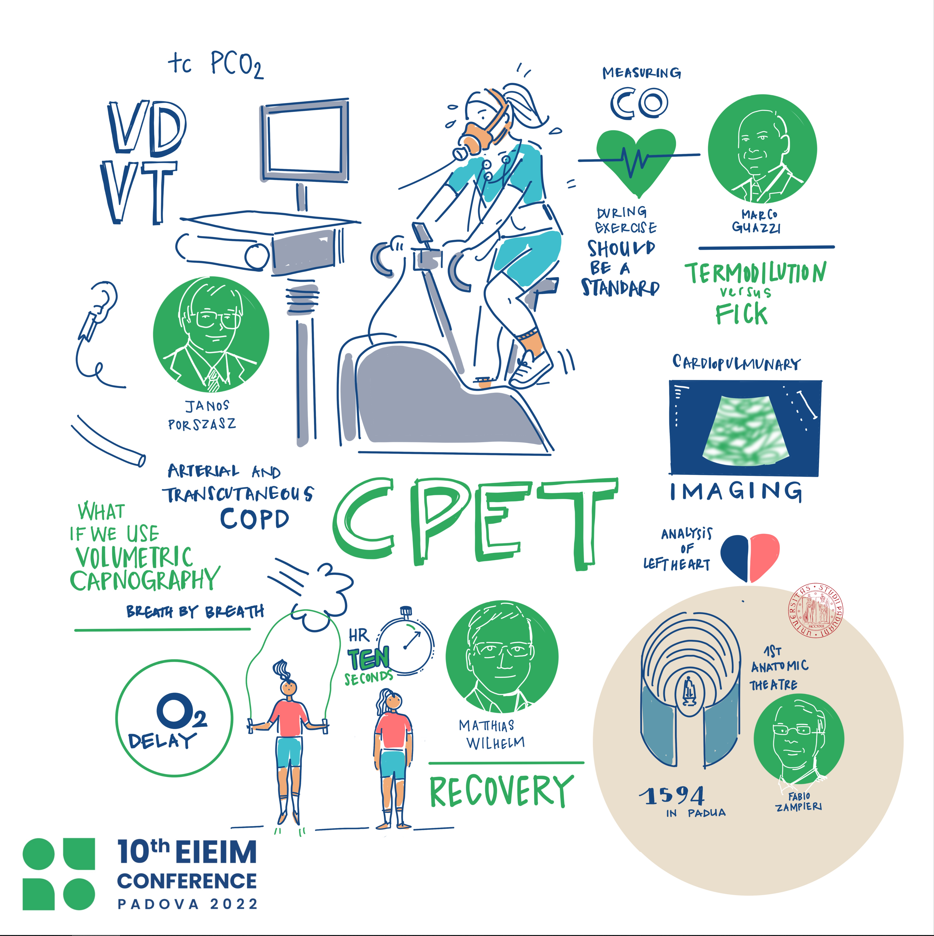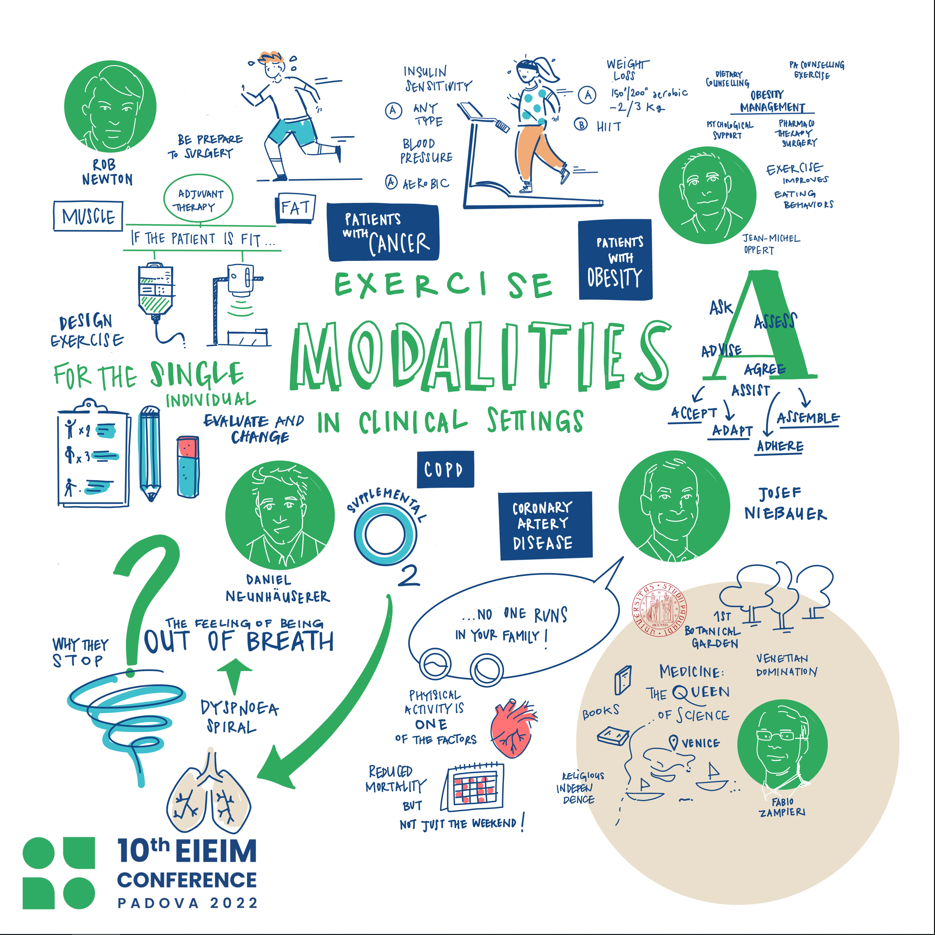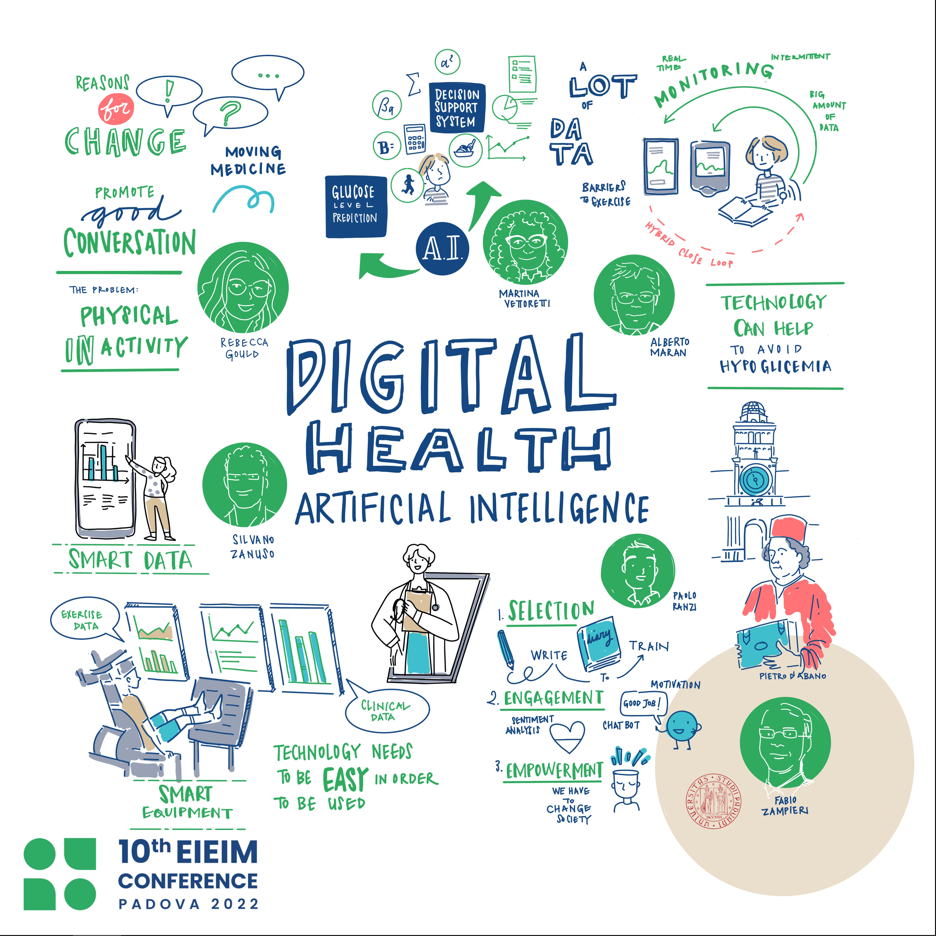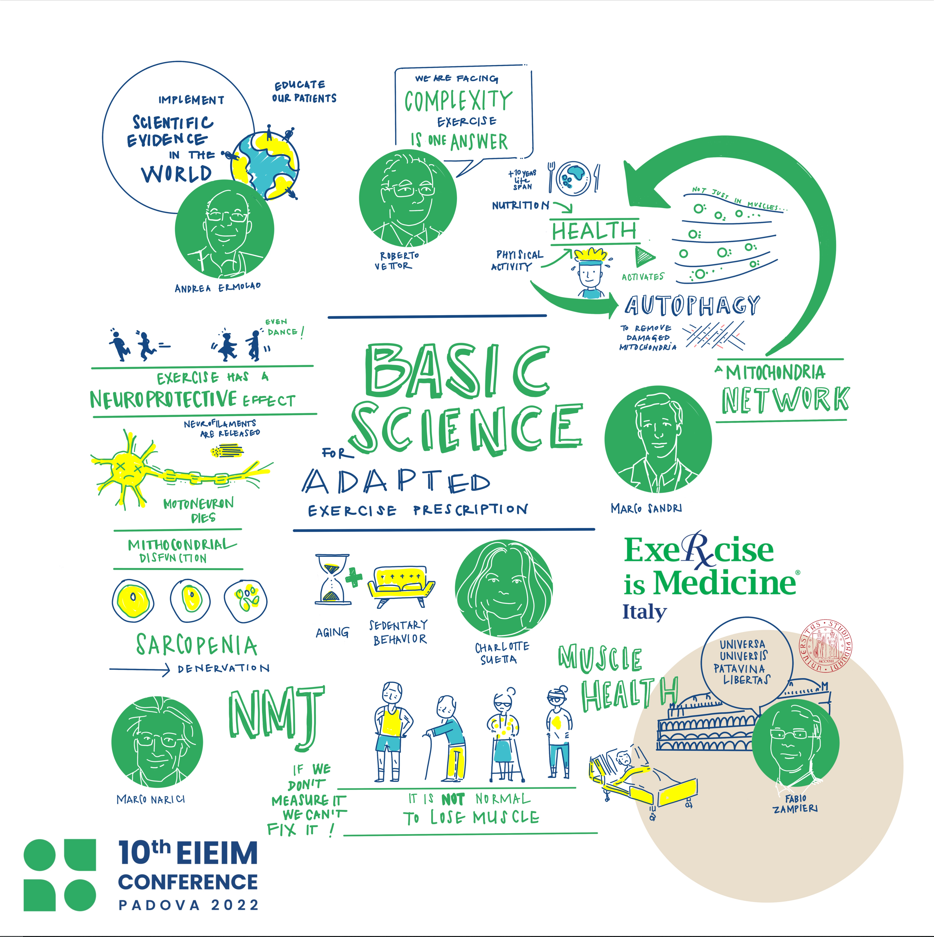Global alliance day at the Sports, medicine & health Summit (SMHS) 2025
26 - 28 June 2025 - Congress Center Hamburg (CCH), Germany
The Global Alliance for the Promotion of Physical Activity is an initiative supported by the IOC, FIMS, and numerous signatories. It aims to promote physical activity through the engagement of professionals from a wide range of disciplines, including sports science, medicine, therapy, nutrition, psychology, education, and other related fields. All participants share a common vision: to move people. The goal is to make physical activity, sports and exercise fundamental components of both individual and societal health, supported by all relevant institutions.
The Sports, Medicine and Health Summit (SMHS) served as an outstanding interdisciplinary scientific forum for the Global Alliance Programme.
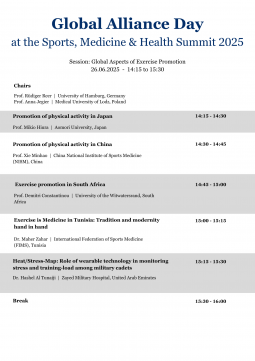
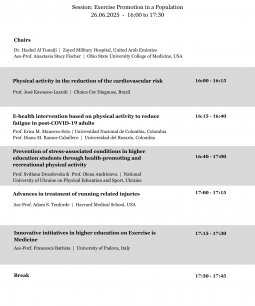
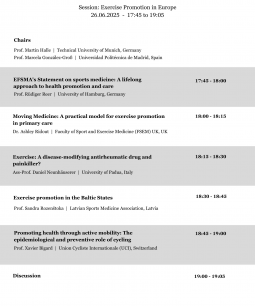
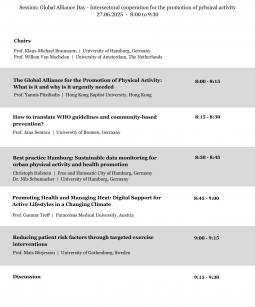
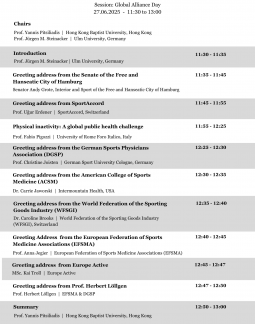
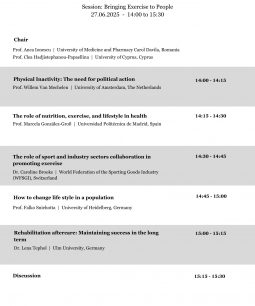
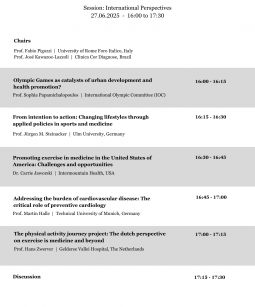
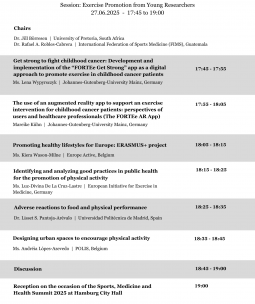
the 10th exercise in medicine
October 2022 - Padua, italy
The 10th annual congress of the European Initiative for Exercise in Medicine e.V. (EIEIM) took place in Padua from October 27-29, 2022. Together with Exercise is Medicine Italy, a scientific congress on interesting sports medicine and sports science topics was held. Various international speakers were present to talk about the desire for a global change regarding the physical activity of the population. One idea is to incorporate physical activity into future medical treatment plans. The following 10 key learnings describe the most important scientific findings presented at the congress:
Physical inactivity as a major global problem
To address the global problem of physical inactivity in the population, it is important that the issue be discussed in public. Initiatives such as the European Initiative for Exercise in Medicine e.V., Exercise is Medicine or even Moving Medicine try to highlight the reasons for integrating sport and exercise into the treatment plans of patients in clinics and medical practices, for example the cost-effective prevention of various societal diseases of the musculoskeletal system, metabolism or psyche.
Digital technologies must be simple and smart
In order for physical activity to be measured and performed in the clinical setting with the help of digital technologies, it is important that the technical solutions are easy and quick to use and enable valid measurements. This is the only way to ensure that the equipment is suitable for everyday clinical use and can be used to support patients' physical activity or for data collection by scientists.
More motivation for physical activity through digital technologies
Through the use of digital media, individuals can be motivated to make a greater commitment to their own health in terms of increasing physical activity. Digital technologies, for example, offer the possibility of recording and analyzing one's own workouts and sending motivational messages. Together with guidance on how to use the technologies correctly, this would be a possible approach to positively change society in terms of physical activity.
Healthy diet and physical activity keep the body's cells healthy
Mitochondria are cell organelles and are found in our body cells. As so-called "power plants of the cells", they produce adenosine triphosphate (ATP), which serves the human body as an energy carrier and is needed throughout the body. Physical activity requires the mitochondria to work more intensively, which, together with a healthy diet, can have a positive effect on the health and function of these important cell organelles and thus lead to better cell health in the organism.
Physical activity has a protective effect on nerve cells
Not only athletic training, but also other types of physical activity, for example, everyday exercise or a round of dancing, can have a protective effect on the body's peripheral and central nerve cells, and thus on the musculoskeletal system. Physical activity can reduce small inflammatory processes and neuronal cell death, which in turn can counteract muscle loss and loss of cognitive performance.
Muscle loss and bedriddenness in old age "don't have to be".
Aging processes and sedentary behavior often lead to rapid loss of muscle mass in the elderly. The disappearance of important muscles can be accompanied by immobility and even bedriddenness. To counteract muscle loss in old age in a targeted manner, it is important that older people receive adapted exercise programs and that strengthening physical activity takes place on a regular basis: "It is not normal to lose muscle".
Significantly reduced risk of death through physical activity
Physical inactivity has become a global problem in recent decades, yet physical activity is one of the factors that has been shown to reduce the risk of death. It is important to be physically active on a regular and continuous basis. Not only sports activities such as going for a jog or fitness training, but also ordinary activities as part of everyday life are helpful, such as household and family activities or an active commute to work. People who exercise regularly live longer.
Incorporate physical activity into clinical treatment plans
Treatment of patients in clinics and physicians' offices does not currently include a prescription for exercise or physical activity, even though physical activity has been shown to help against many non-infectious diseases. Therefore, a global goal of Exercise in/is Medicine is to ensure that physical activity is built into treatment plans for patients on an individual basis. Thus, for example, even before musculoskeletal surgery, physical training could be used to prescribe therapy in an adapted manner.
Improving nutrition and weight management through physical activity
Regular exercise and training can have a positive effect on nutritional behavior and weight management. In the medical setting, nutritional counseling, exercise counseling, and psychological support are also available for targeted physical activity and achieving weight loss and/or a healthy diet.
Improved blood pressure and adjusted blood glucose through sport and exercise
Regular targeted physical activity can not only bring weight loss, but also lead to improved insulin sensitivity, which in turn can lead to healthy blood sugar levels. Regular physical activity also has a positive effect on vascular function and thus on blood pressure.
At our EIEIM conference in Padua in October 2022, live images were sketched during the scientific sessions, summarizing the topics of the presentations in the sessions:
